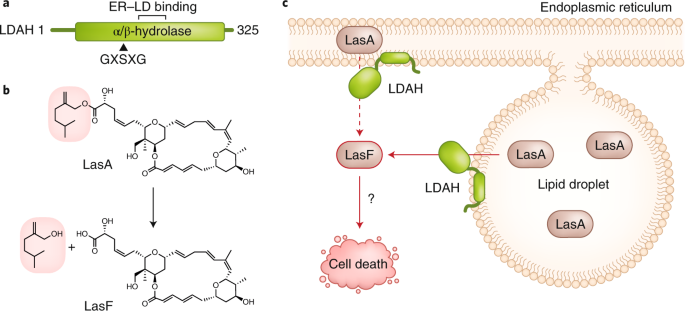- Select a language for the TTS:
- UK English Female
- UK English Male
- US English Female
- US English Male
- Australian Female
- Australian Male
- Language selected: (auto detect) - EN
Play all audios:
ABSTRACT POLYMER gels can undergo a volume phase transition (either continuous or discontinuous) when an external condition, such as temperature or solvent composition, is altered1–3. During
this transition, the volume may change by a factor of several thousand, and various patterns develop in the gel. The patterns arising from swelling and shrinking differ in both their
appearance and their physical mechanisms. The mechanism for the formation and evolution of patterns on swelling gels has been established as being due to a single kind of mechanical
instability4–7; in contrast, the shrinking patterns seem to be sensitive to both the initial and final states of the transition. Here we classify the various shrinking patterns in the form
of a phase diagram, and explain the poly-morphism in terms of macroscopic phase separation. Access through your institution Buy or subscribe This is a preview of subscription content, access
via your institution ACCESS OPTIONS Access through your institution Subscribe to this journal Receive 51 print issues and online access $199.00 per year only $3.90 per issue Learn more Buy
this article * Purchase on SpringerLink * Instant access to full article PDF Buy now Prices may be subject to local taxes which are calculated during checkout ADDITIONAL ACCESS OPTIONS: *
Log in * Learn about institutional subscriptions * Read our FAQs * Contact customer support SIMILAR CONTENT BEING VIEWED BY OTHERS LINEAR ELASTICITY OF POLYMER GELS IN TERMS OF NEGATIVE
ENERGY ELASTICITY Article Open access 11 August 2021 DETERMINATION OF THE INHOMOGENEOUS DESWELLING OF THERMORESPONSIVE POLY(_N_-ISOPROPYL METHACRYLAMIDE) MICROGELS BY COMBINING DYNAMIC LIGHT
SCATTERING, HIGH-SPEED ATOMIC FORCE MICROSCOPY, AND ELECTROPHORESIS Article Open access 22 November 2024 A BENCHMARK FOR GEL STRUCTURES: BOND PERCOLATION ENABLES THE FABRICATION OF
EXTREMELY HOMOGENEOUS GELS Article 14 April 2021 REFERENCES * Tanaka, T. _et al._ _Phys. Rev. Lett._ 45, 1636–1639 (1980). Article ADS CAS Google Scholar * Ilavsky, M. _Macromolecules_
15, 782–786 (1982). Article ADS CAS Google Scholar * Hirotsu, S., Hirokawa, Y. & Tanaka, T. _J. chem. Phys._ 87, 1392–1395 (1987). Article ADS CAS Google Scholar * Tanaka, T. _et
al._ _Nature_ 325, 796–798 (1987). Article ADS CAS Google Scholar * Onuki, A. _J. phys. Soc. Japan_ 57, 699–702; 703–706 (1988). Article ADS CAS Google Scholar * Sekimoto, K. &
Kawasaki, K. _J. phys. Soc. Japan_ 56, 2997–3000 (1987). Article ADS CAS Google Scholar * Hwa, T. & Kardar, M. _Phys. Rev. Lett._ 61, 106–109 (1988). Article ADS CAS Google
Scholar * Matsuo, E. S. & Tanaka, T. _J. chem. Phys._ 89, 1695–1703 (1988). Article ADS CAS Google Scholar * Matsuo, E. S. thesis, Massachusetts Inst. Technol. (1988). * Ziabicki,
A., _Fundamentals of Fiber Formation: the Science of Fiber Spinning and Drawing_ (Wiley, New York, 1976). Google Scholar * Tanaka, T. Hooker, L. O. & Benedek, G. B. _J. chem. Phys._ 59,
5151–5159 (1973). Article ADS CAS Google Scholar * Tanaka, T. & Fillmore, D. J. _J. chem. Phys._ 70, 1214–1218 (1979). Article ADS CAS Google Scholar Download references AUTHOR
INFORMATION AUTHORS AND AFFILIATIONS * Department of Applied Biological Sciences, Massachusetts Institute of Technology, Cambridge, Massachusetts, 02139, USA Eriko Sato Matsuo & Toyoichi
Tanaka * Department of Physics and Center for Materials Science and Engineering, Massachusetts Institute of Technology, Cambridge, Massachusetts, 02139, USA Toyoichi Tanaka Authors * Eriko
Sato Matsuo View author publications You can also search for this author inPubMed Google Scholar * Toyoichi Tanaka View author publications You can also search for this author inPubMed
Google Scholar RIGHTS AND PERMISSIONS Reprints and permissions ABOUT THIS ARTICLE CITE THIS ARTICLE Matsuo, E., Tanaka, T. Patterns in shrinking gels. _Nature_ 358, 482–485 (1992).
https://doi.org/10.1038/358482a0 Download citation * Received: 06 January 1992 * Accepted: 23 June 1992 * Issue Date: 06 August 1992 * DOI: https://doi.org/10.1038/358482a0 SHARE THIS
ARTICLE Anyone you share the following link with will be able to read this content: Get shareable link Sorry, a shareable link is not currently available for this article. Copy to clipboard
Provided by the Springer Nature SharedIt content-sharing initiative





